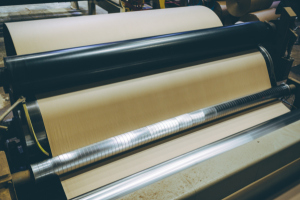Currently, cellulose is one of the most highly valued industrial raw materials of natural origin. This is because it can be used to produce various materials useful in everyday life. What is the role of cellulose in the economy? Where can cellulose be found? What should you know about the properties and occurrence of this substance? Let's find out!

What is cellulose?
First, let us answer the basic question: what is cellulose? It is not without a reason that the Latin word cellula means a cell. In many plant species, cellulose is a component of cellular walls. In order to better understand what cellulose means for a cell, it is useful to recall the basic structure of plant cells. Inside each one, there is a nucleus, cytoplasm, vacuoles and mitochondria, all embedded within membranes and walls. What is the role of cellulose in plants? The basic function of cellulose walls is to protect the cell interior. They also give cells their shape.
What exactly is cellulose? It is a linear polymer of plant origin, an unbranched polysaccharide, which is included among others in dietary fibre. The molecular formula of cellulose is as follows: (C6H10O5)n.
What is cellulose produced from?
The natural production of cellulose fibres is made possible by photosynthesis, in which plants spontaneously produce energy with the use of carbon dioxide and sunlight. So, what is cellulose produced from? The composition of the plant cell walls is quite simple: it contains residues of a monosaccharide, D-glucose, linked by β-1,4-glycosidic bonds and forming characteristic, folded chains.
Cellulose characteristics and structure
What does plant cellulose look like? It is a white, odourless and tasteless solid and it is insoluble in water. Cellulose has a fibrous structure. It is present in cell walls together with other organic compounds such as lignin or pectin. Cellulose can be dissolved with the use of what is known as Schweizer’s reagent, a chemical solution of tetraamminecopper(II) dihydroxide.
Cellulose is present in various forms, differing in terms of physical and chemical properties. It is interesting to know that some types of cellulose, for example ethyl cellulose, dissolve in polar solvents and swell in contact with alcohols, that methyl cellulose solutions are strong foaming agents, and that carboxy methyl cellulose solutions are highly hygroscopic.
In which plants can cellulose be found?
Which plants contain cellulose? Cellulose can be found in many species of plants growing in temperate or equatorial climates as well as in colder regions. Examples of plants containing cellulose include, among others:
- cotton,
- flax,
- hemp,
- coniferous and deciduous trees,
- fruits and vegetables (for example: apples, pears),
- nuts,
- cereals.
Cotton is assumed to be the plant richest in cellulosic fibres. The level of cellulose in its cells is as high as 95%.

Cellulose and its functions in the human body
What is the role of cellulose in the human body? We avail ourselves of this substance in the food we eat, and it has a very important function in maintaining the well-being of the digestive system. What is cellulose doing in the intestines? Thanks to cellulose, the food moves faster down the digestive tract. Additionally, it makes us feel satiated. The fibre supports metabolic processes and the natural detoxification of the organism.
The use of cellulose in the food industry
In food industry facilities, cellulose is very often used in production processes. For what is it used? It is a popular thickener and stabiliser, also known as E460. This additive can be found in many products bought on a daily basis, e.g., in instant dishes, wheat rolls, jams, creams, sauces, etc.
Cellulose is also used in dietetic foods and specialist food supplements, for example in weight-loss shakes, yoghurt, smoothies, and soups. Cellulose casings are used in the production of sausages and cooked or smoked cold cuts.
The importance of cellulose in the paper and pharmaceutical industries
Stable and flexible cellulosic fibres are a particularly important raw material in the paper industry. The most well-known cellulose products include paper, cardboard, packaging and hygiene products (toilet paper, cleaning cloths, kitchen towels).
The potential of cellulose is also very well-known to pharmaceutical manufacturers. This raw material can now be found, among others, in coatings/shells of tablets, capsules, powders, etc. Biopolymer fibres of this sort are also used in the production of medical dressings.
Other applications of cellulose
Cellulose has many applications. It is used by textile specialists and companies manufacturing various types of artificial silk (including: cuprammonium, acetate and viscose rayon) and cotton-like and wool-like fibres.
Moreover, cellulose esters together with nitric acid are used in the production of nitrocellulose. This raw material is used on a massive scale in the arms industry for the production of explosives and projectile propellants.
In recent decades, the biofuel industry has also taken an interest in cellulose and has started mass production of ethanol from cellulose derived from plant waste, wood residues and straw. Ethanol is an alternative fuel that can significantly reduce the consumption of non-renewable fossil fuels.
- Cellulose, an entry in: Encyklopedia PWN, access: https://encyklopedia.pwn.pl/haslo/celuloza;3883972.html
- Ciabach J., Właściwości i zastosowanie eterów celulozy, in: Ochrona Zabytków 1991, 43/4 (171), 222-224, access: https://bazhum.muzhp.pl/media/files/Ochrona_Zabytkow/Ochrona_Zabytkow-r1990-t43-n4_(171)/Ochrona_Zabytkow-r1990-t43-n4_(171)-s222-224/Ochrona_Zabytkow-r1990-t43-n4_(171)-s222-224.pdf
- Szymański Ł., Grabowska B., Kaczmarska K., Kurleto Ż., Celuloza i jej pochodne – zastosowanie w przemyśle, Archives of Foundry Engineering, Volume 15, 4/2015, access: https://yadda.icm.edu.pl/baztech/element/bwmeta1.element.baztech-b24a1675-2d43-43e1-b517-4c077371bc6b/c/27_szymanski_grabowska_celuloza_4s_2015.pdf.
